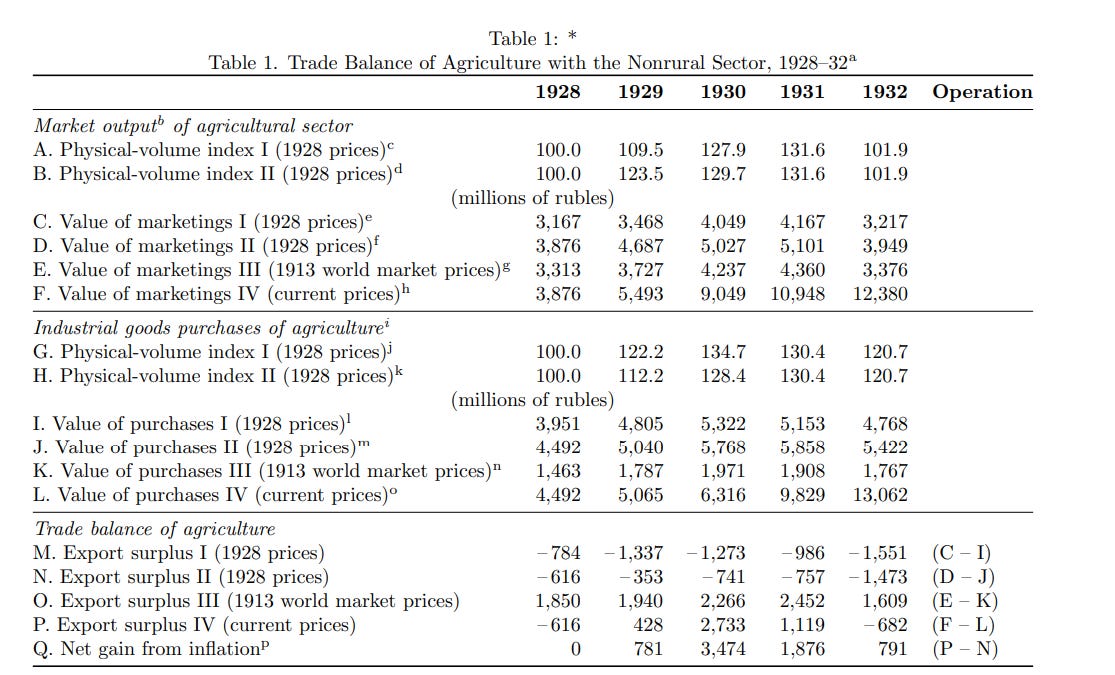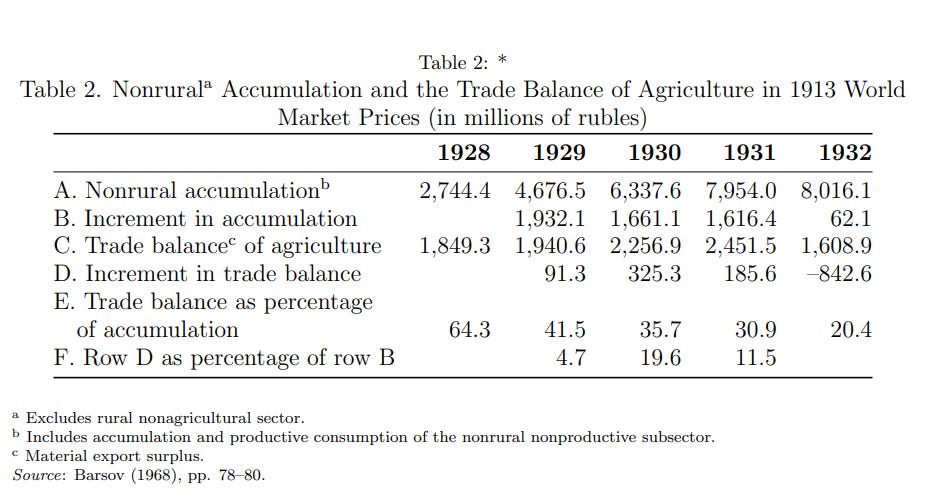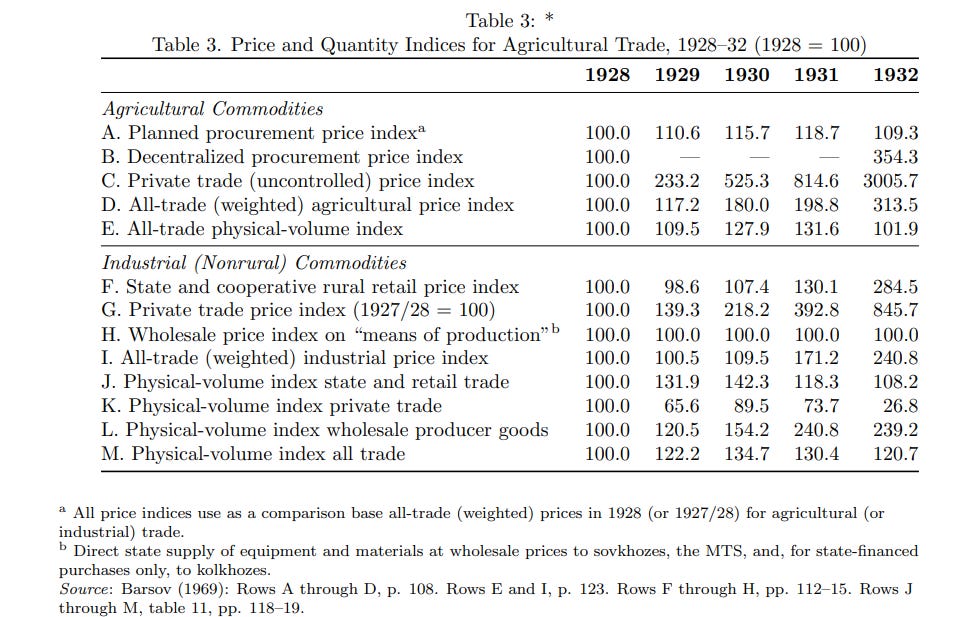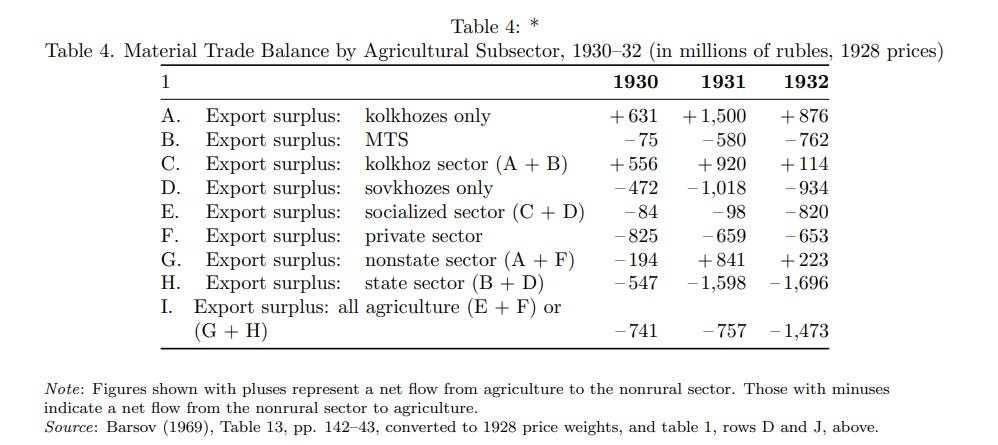Bukharin: What do we need grain or steel? It is stupid to phrase the question in such a way. But when I say both, they [Stalin and associates] say I should pick one or the other. Otherwise I am engaging in trickery.
Molotov: You have become a terrible leftist, Bukharin.
Bukharin: A nice trick. Try to get bread without metal and vice versa. We are allowing the crude formulation of the question, suitable for young pioneers not for the leaders of economic policy.
Voice: Why don't you shut up.
Bukharin: I can just stop speaking if you wish.1
There is an universally present idea among both leftwing and rightwing people, communists and anti-communists that the Soviet Union funded its industrialization through economic transfers from agriculture. It was born in the Marxist historiography about the birth of capitalism2 and its application to economic development at large that produced policy ideas in the style of “socialist primitive accumulation” with “uneven exchange” with a rural economy which Preobrazensky and “left communists” are famous for. It dominates the discourse ever since as the addition to a lot of other dubious counter-factuals for the paths taken in which every action is a historical necessity mechanically produced by material conditions.
This view is generally not supported since Barsov 1969 and Millar 1974. Not only this but due to quite famous loss of capital stock (animals) due to a response to collectivization (or “kulak sabotage”) agriculture itself demanded a moderate investment to keep the output from outright full-on collapse in the face of declining agricultural labor force. These investments came from the “non-agricultural” sector, ie urban workers. Soviet agriculture was born in suffering as a problematic sector and continued its life as such until the collapse of the Union. It doesn’t mean that the collectivization didn’t contribute to the Soviet industrial development. It did so by pushing peasants into urban economy3 but peasants didn’t pay for it, I will come back to it later.
For a general discussion please read The Soviet Agricultural Surplus: A Retrospective from Gregory that talks both about economics and political dimension citing the transcripts from Politburo.
Below the original tables from Millar 1974.
Sources:
Millar, James R. "Mass Collectivization and the Contribution of Soviet Agriculture to the First Five-Year Plan: A Review Article." Slavic Review 33, no. 4 (December 1974): 750–766.
Gregory, Paul. "The Soviet Agricultural Surplus: A Retrospective." Europe-Asia Studies 61, no. 4 (May 2009): 669–683. https://doi.org/10.1080/09668130902826287.3
Danilov, V.P., Khlevnyuk, O.V. & Vatlin, A.Yu. (2000) Kak lomali NEP, 5 vols, Danilov et cd. 2000, vol. 2, p. 382 // Данилов В.П., Ватлин А.Ю., Хлевнюк О.В. Как ломали НЭП.
Outside of Russia and its Marxism, the author of very influential textbook about the Soviet development was Maurice Dobb with his Soviet Economic Development since 1917. Maurice Dobb was a Marxist historian and the author of several books about the capitalist transition. It leads a funny situation in which early Marxist historiography defined the policy in the Soviet Union which then was used to define what exactly capitlalism and socialism are, with capitlaism being “not the Soviet Union” https://leftiehistorian.wordpress.com/2017/07/23/in-praise-of-henry-hellers-the-birth-of-capitalism-but-a-comment-on-the-problem-of-the-missing-ussr/ as now we are living through defining capitalism or neoliberalism “as non-China”.
You have probably heared about other artifact of Marxist historiography, violent “enclosures” and how they have pushed peasants into becoming the urban proletariate, it didn’t exactly happen, the transition was far more driven by market mechanisms in the face of population increase.






